Skunks are known for having a negative reputation among animals.
The single or double stripe along the back of each of the many skunk family members—all of which are native to the Americas—makes them clearly identifiable. Not to mention the scent.
Animals like Skunks may take up residence in the deserted burrows left by previous occupants, or they may live in enclosed spaces such as hollow logs and small caverns.
Strong front claws on their squat legs make them perfect for burrowing and digging. Skunks hibernate-like in their subterranean burrows during the winter.
While some animals like skunks species have fur that is brown, gray, or light tan, the majority of skunks have black fur with one or two white stripes. Even the baby skunks have stripes.
These are a few more species that employ odor as a defense mechanism or means of survival.
1. Brown Marmorated Stink Bug:
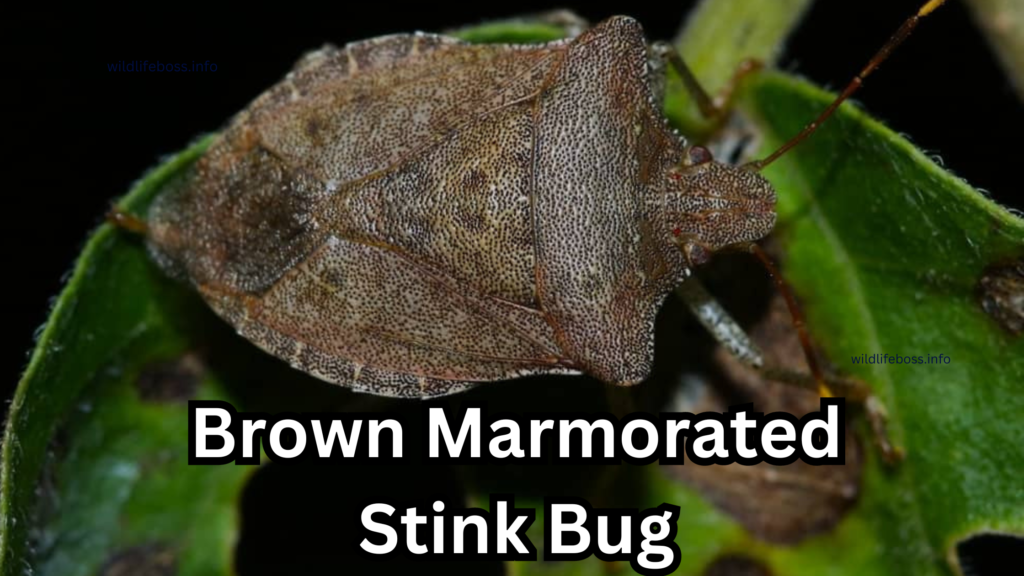
Scientific Name: Halyomorpha halys
Quick Summary: An aggressive insect similar to animals like skunks in scent.
Originating in Asia, the brown marmorated stink bug is an invasive species found in North America and other regions of the globe. It was inadvertently introduced to the United States in the late 1990s, and it rapidly expanded across North America.
Scent glands are located beneath the thorax of the brown marmorated stink bug. The glands are situated in the space between the first and second pairs of legs. The strong smell that the stink insect released has been compared to coriander.
When the insect senses danger, it emits a foul-smelling chemical that is produced inside its scent glands. Scientists surmise that the potent odor prevents the stink bug from being consumed by fish, birds, mammals, and reptiles.
Scent compounds are likely to be released when people attempt to remove or catch a stink bug from their home.
Stink bugs are around two-thirds of an inch long, with a distinctive shield-like body shape. They can appear marbled or coppery, and their color is brown. The body of the shield is outlined in a thin, light brown color.
Through their proboscis, brown marmorated stick bugs feed by sucking plant liquids, leaving dimples on fruit or foliage.
The stink bug is an invasive insect that has negatively impacted North American agricultural crops. Because they are not discriminating eaters, stink bugs can be found consuming a broad range of fruits, vegetables, and grains.
2. Musk Ox
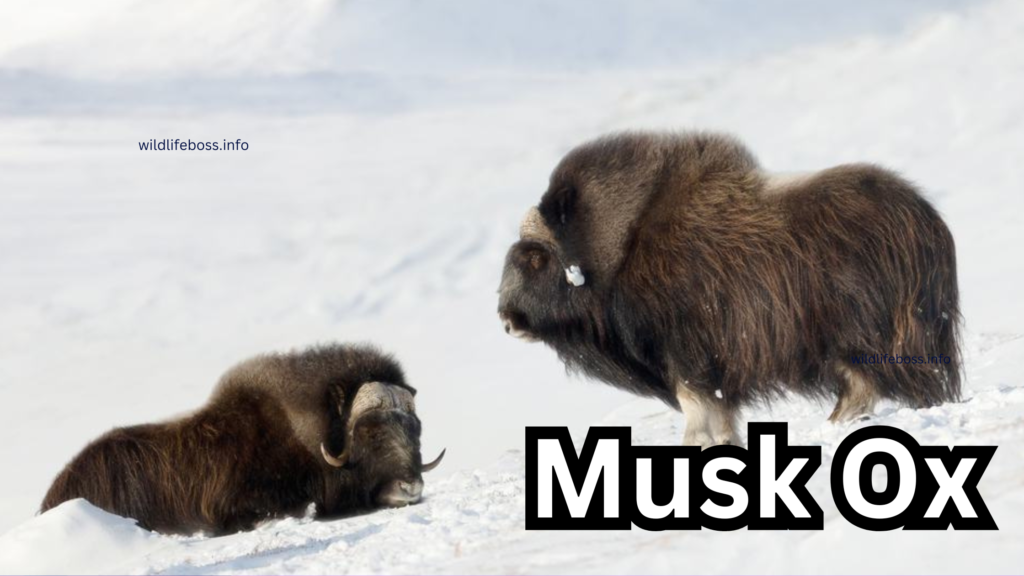
Scientific Name: Ovibos moschatus
Quick Summary: A bovine whose powerful aroma draws interest in women.
Musk oxen are a type of bovine that are indigenous to the Arctic tundra regions of Alaska, Canada, Siberia, and Norway. They share kinship with sheep, goats, cattle, buffalo, wildebeest, and bison, among other bovine relatives. Male musk oxen can weigh up to 800 pounds and reach a shoulder height of five feet.
The musk ox does not employ his strong odor to ward off predators animals like skunks and stink bug do. Instead, to entice females during mating season, male musk oxen generate a potent, powerful aroma. The male musk ox’s fragrance aids in asserting his superiority over smaller males and its female herd.
Musk oxen are characterized by rough, shaggy fur with shorter hair layers. Both the male and female musk oxen have horns that twist at the end and reach down either side of their skulls. Throughout the animal’s life, the horns never cease growing.
The musk oxen, with their massive stature and menacing girth, are neither hunters nor predators. It is a plant-eating animal. Its preferred diet consists of woody bushes, grasses, and mosses.
3. Stink Bird:
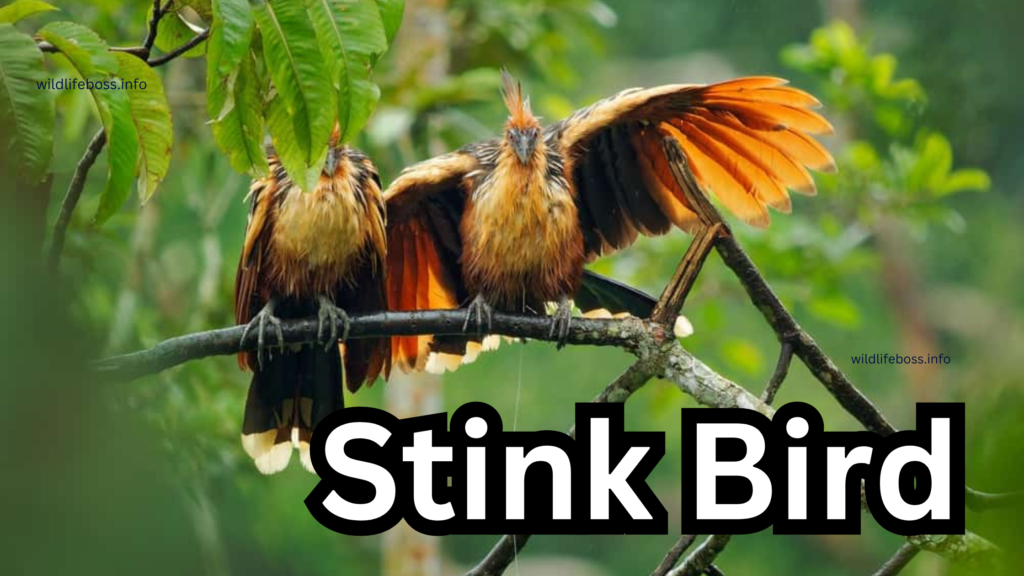
Scientific Name: Opisthocomus hoazin
Quick Summary: A stinky bird of the Amazon
The strange bird known as the hoactzin inhabits the mangroves and wetlands of South America’s Amazon Forest. It represents the lone survivor of its genus.
In actuality, scientists are still working to determine the exact classification of this peculiar bird.
Hoactzin birds are gregarious birds that nest on overhanging water branches. The chicks use their clawed wings to climb around the branches of the trees from the moment they are born.
The birds regurgitate and ferment a sticky concoction of food that they give to their offspring.
The distinctive stench of the stink bird is caused by the hoactzin’s unique digestive system, which stores and ferments food. The digestive mechanism of the bird resembles that of ruminant mammals in that it contains an excessive crop of leftover food similar to the animals like skunks.
The crop rots and ferments for a considerable amount of time, allowing the plant and veggies that the bird consumes to stay there.
The hoactzin, sometimes known as the stink bird, is an odd sight. The hoactzin is about the size of a chicken, with a face that is blue-skinned, deep burgundy eyes, and a head covered in spiky, crested feathers.
The bird’s body is reddish-brown, tan, and varied colors of brown. Long, tufted tail feathers adorn it.
4. Striped Polecat
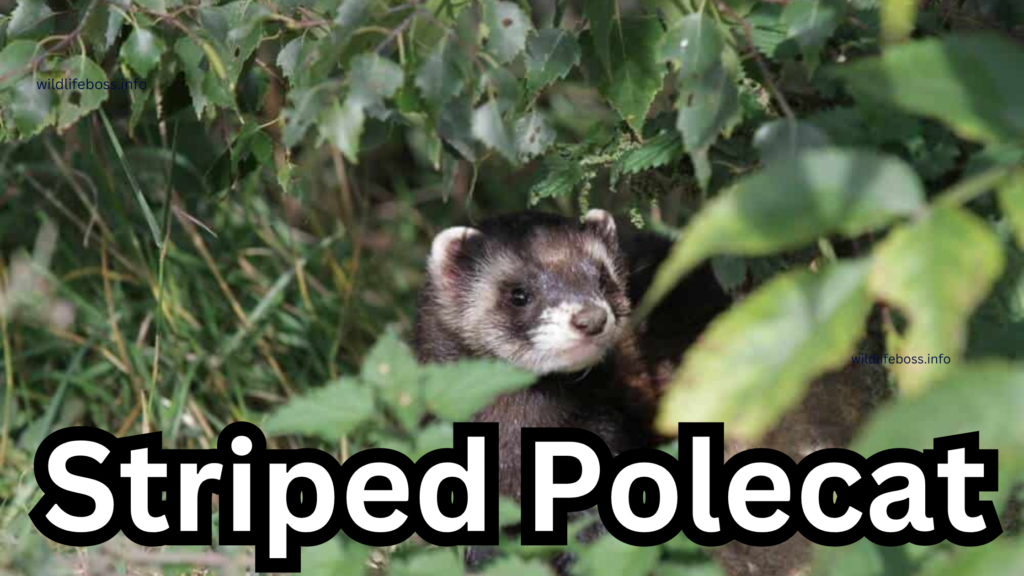
Scientific Name: Ictonyx striatus
Quick Summary: Africa’s version of the skunk
While skunks belong to the Americas, the equally odorous striped polecat, sometimes known as the zorilla, is prevalent throughout Central, Southern, and Sub-Saharan Africa. It has acquired the moniker “African skunk.”
At three to five pounds on average, striped polecats are smaller than their American cousins. However, the striped polecat shares the same markings from its face to the end of its tail as the animals like skunks.
The striped polecat usually has lighter-colored hair on its back, face, and tail with black feet and underbelly, though colorations can differ depending on location.
The stomachs of striped polecats, which are carnivores, are comparatively small. They have to feed frequently and are always on the lookout for birds, rodents, insects, and reptiles.
They are lone hunters who use their razor-sharp fangs to rip their prey to pieces and their claws to dig for their next meal.
Despite their small size, striped polecats exhibit fierceness, aggression, and territoriality. Similar to the animals like skunks, striped polecats would spray predators to defend themselves because they have smell glands close to their anus.
In addition to having an awful smell, the toxic spray can temporarily blind someone who is struck in the face by a blow to the striped polecat’s adversary and cause searing eye discomfort.
5. Millipede

Scientific Name: members of the Diplopoda family
Quick Summary: An arthropod with scent glands
Millipedes are a group of more than 12,000 species of arthropods that belong to the Diplopada family; they are neither insects nor worms.
The majority of adult millipedes have between 30 and 100 pairs of legs, one pair for each segment of their body, despite the name suggesting much more legs. A millipede will constantly develop and add new body segments during its lifetime.
Millipedes are not extremely speedy despite having a large number of legs. They can hunt without speed because they are herbivores. Additionally, because they have additional defense measures in place, they do not need to outrun possible predators.
Scent glands on the sides of millipedes’ bodies secrete a strong liquid that is a combination of quinone, iodine, and hydrocyanic acid. The fluid repels predators because of its offensive odor similar to animals like skunks.
Furthermore, if the liquid comes into touch with human skin, it may irritate it and possibly blister it.
The enemy of the millipede is not showered with the foul-smelling material, and the millipedes are unable to bite or sting. Additionally, millipedes coil their bodies into tight, protective rolls in response to threats.
Millipedes move in vast numbers and are typically observed in groups. They look for dark, wet, and moist areas with lots of decomposing vegetation, like under houses and under rotting logs.
Sea also:10 Different Animals Like Cows (With Photos)
6. Tasmanian Devil
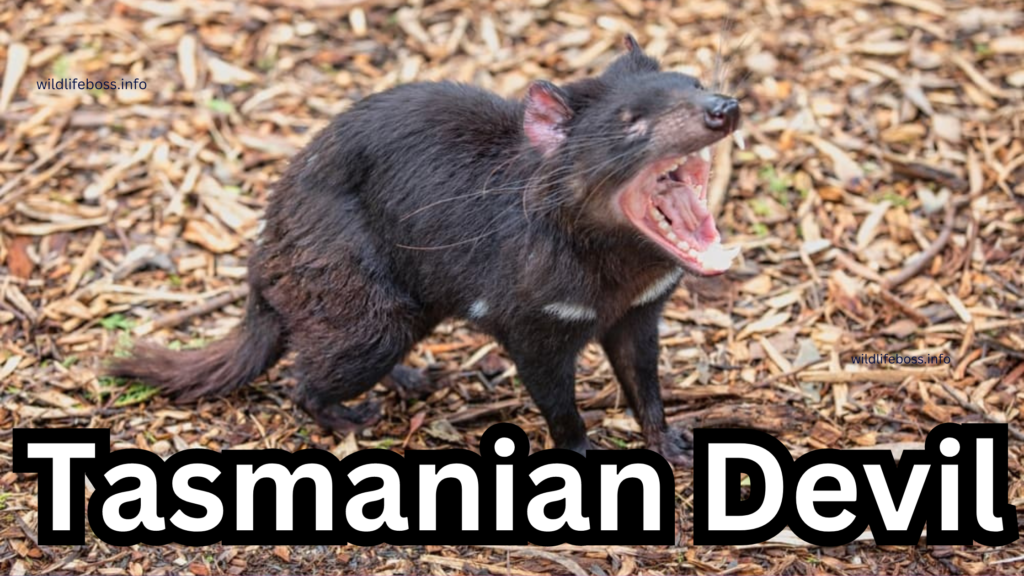
Scientific Name: Sarcophilus harrisii
Quick Summary: A powerful predator with a pungent odor
The Tasmanian devil is not so much a devil as it is similar to the animals like skunks, more like a badger or wolverine. The Tasmanian devil is the largest of the meat-eating marsupials, related to possum, wombat, and kangaroo.
This mammal was formerly restricted to the island of Tasmania, but it has been successfully introduced to the Australian mainland.
Tasmanian devils don’t grow very big. Males are about the size of terrier dogs and weigh about eighteen pounds. Less than 20% of Tasmanian devils have white markings on their chest and back, while the majority of them have black fur.
The Tasmanian devil is said to be vicious, violent, and cruel. Its mouth is larger than its body. Of all land mammals, the Tasmanian devil has the highest bite force per unit of body mass. It can bite through metal and break bones.
Even with its fierce nature, the Tasmanian devil has an additional protection system to keep predators at bay. The animal’s tail base has scent glands that have the power to emit an overpowering, disagreeable odor.
The Tasmanian devil will emit this foul smell to ward off enemies when it feels threatened.
7. King Rat Snake
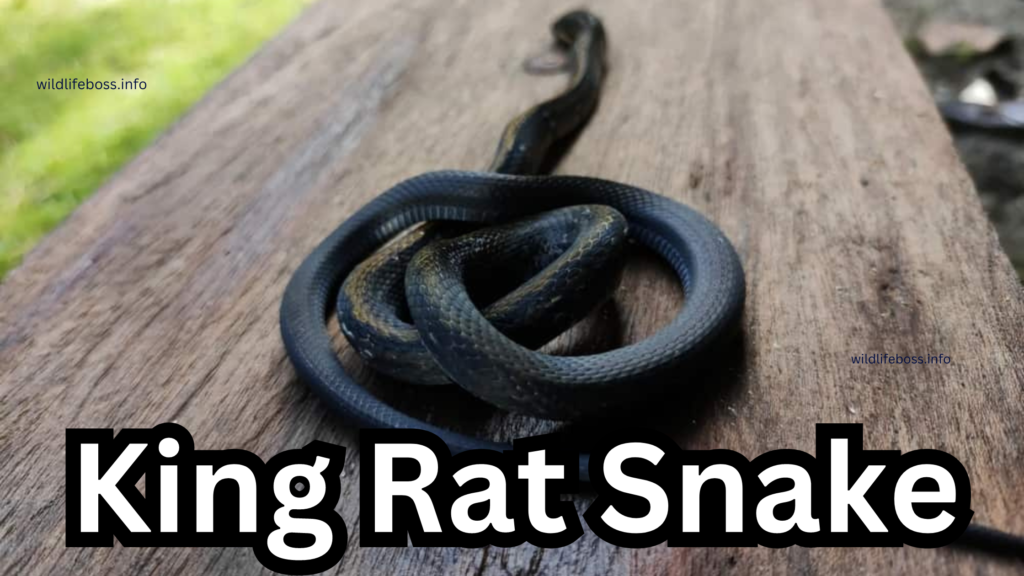
Scientific Name: Elaphe carniata
Quick Summary: A scent-detecting secreted weapons that eats snakes.
The king rat snake, which is found in Southeast Asia, is referred to by the locals as the “stinking goddess.” The term “king” in its name alludes to the snake’s propensity to consume other snakes, such as cobras and vipers.
Similar to boas and pythons, it is a constrictor that envelops its victim to suffocate it.
One of the biggest snakes in the area, king rat snakes can reach lengths of about eight feet. The snake is used by farmers to get rid of rats and other pests from their farms. The king rat snake has a yellowish pattern on its brown or black body.
Due to their active lifestyle, king rat snakes will hunt both during the day and at night. Though their preferred form of death is constriction, they are aggressive and will bite quickly.
The highly developed anal glands of the king rat snake, like those of the striped polecat and animals like skunks, give off an awfully potent smell. This is what sets the snake apart from other snake species.
The snake will release these glands as a form of protection when it is handled or comes into contact with a predator.
8. Hoopoe
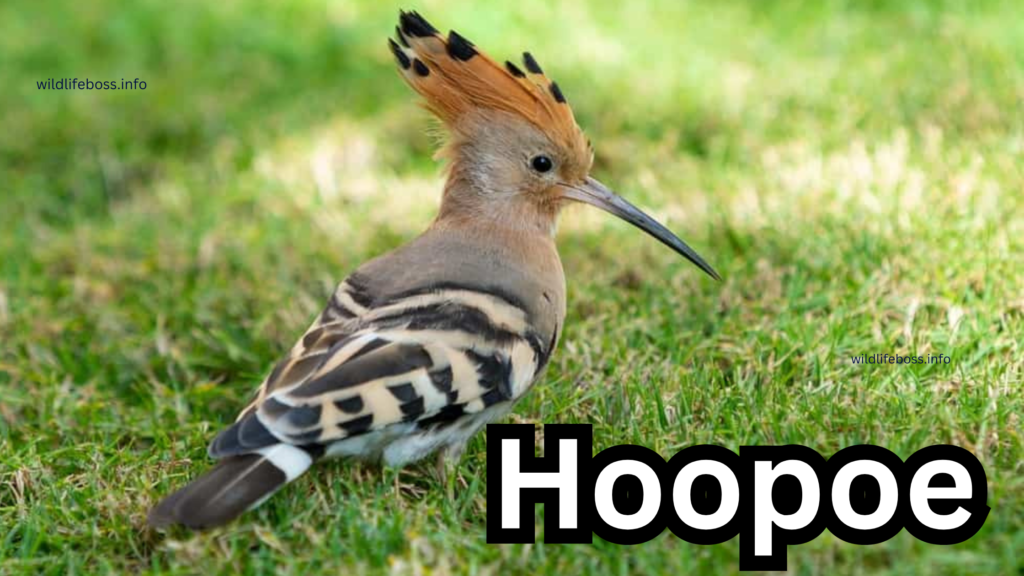
Scientific Name: Upupa epops
Quick Summary: The stinky national bird of Israel.
With its wings striped in black and white and its golden head crowned with a crown of feathers with black tips, the colorful hoopoe is particularly striking.
It is frequently found throughout the Middle East, Asia, Africa, and Europe. Actually, Israel’s national bird is the hoopoe.
The hoopoes move seasonally, just like a lot of other birds do. They don’t allow impediments to their migration paths, such as towering mountain ranges.
Hoops were seen to be flying at great heights during the first Everest expedition.
Hoopoes are colonial birds that eat a lot of insects. Having them available to help manage damaging pests is appreciated by farmers similar to the animals like skunks. To safeguard hoopoes and their habitats, laws have been implemented in a number of nations.
The hoopoe’s peculiar and repulsive defense system doesn’t seem to have any bearing on its appeal. Newly hatched chicks and brooding female hoopoes can secrete a glandular fluid that has a strong stench of rotting meat.
To ward against predators, the secretions are rubbed onto the birds’ feathers and nests.
Even the nestling hoopoe may defend itself with the help of its scent gland. The poisonous material can be sprayed at predators by chicks. Additionally, the chicks are capable of imitating a snake’s hissing sound.
9. Bombardier Beetle
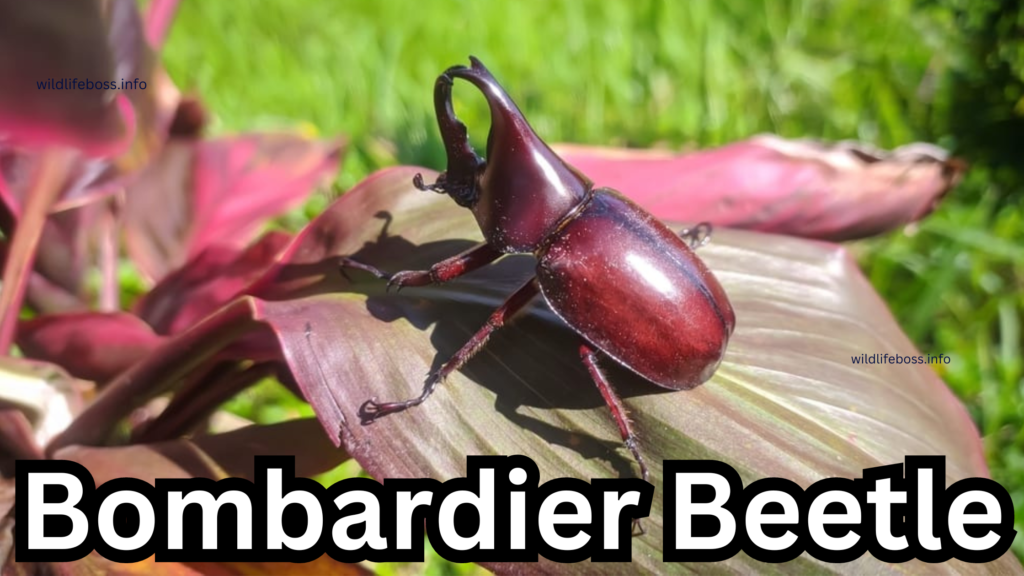
Scientific Name (family): Carabidae
Quick Summary: Defending itself with hot, smelly chemicals
The Carabidae family contains more than 500 species of bombardier beetles. With the exception of Antarctica, they can be found on every continent in the world. They inhabit areas that are both grassy and wooded in temperate climates.
Their formidable defense system is the most remarkable feature of this group of beetles. To scare off predators, they not only release an offensive-smelling chemical, but it is also hot and caustic.
There are two chambers in the abdomen of the bombardier beetle; one holds hydroquinone and the other hydrogen peroxide. The beetle transfers each of these substances into a different holding region where a chemical reaction takes place in response to a threat.
High heat and gas are produced as a result of the two chemicals coming together. When the liquid is forced out of the beetle’s abdomen tip, it really approaches boiling point. Often, the heat is sufficient to eliminate its adversary.
In addition to being hot, the liquid chemical is caustic. It can result in blistering, burns, and deadly reactions. Its powerful odor is sufficient to drive away its attackers.
Bombardier beetles can spray chemicals over a considerable distance. With a popping sound, the liquid is discharged and can be pointed in various directions similar to the animals like skunks. The beetle can move to deliver a heated, pungent, and caustic dose of chemicals to its target.
10. Tamandua/Lesser Anteater
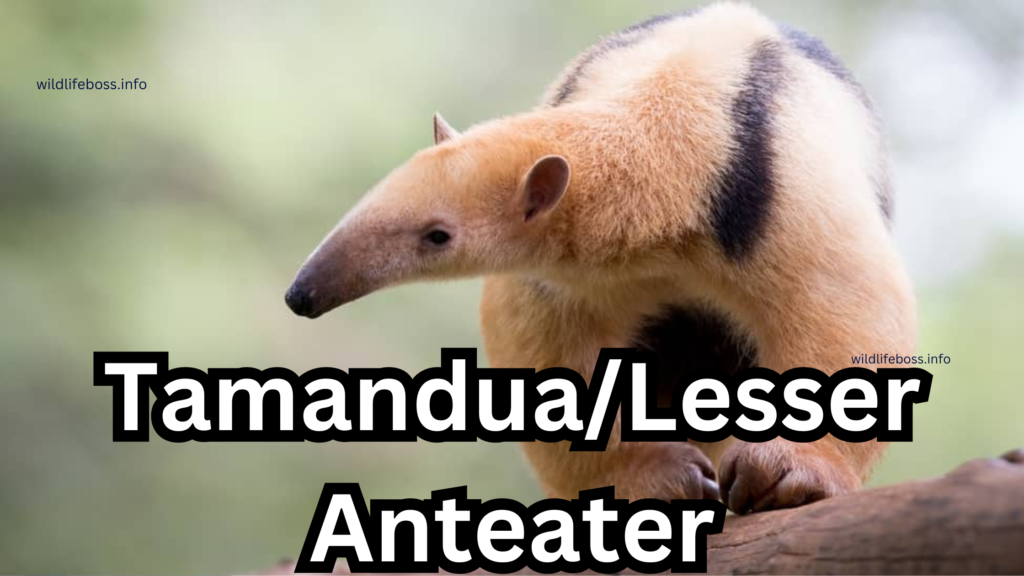
Scientific Name: Tamandua tetradactyla
The tamandua, also known as the smaller anteater, is a species of anteater that is indigenous to the Caribbean and South America. It is a solitary animal that feeds on termites and ants. It can be found in wooded and arid grasslands.
The front paws of the lesser anteater are equipped with strong claws that are perfect for tearing into insect nests.
The lesser anteater is about the same size as other anteater species, despite its name. It can stretch its lengthy tongue from its long, downward-curving snout. The anteater can easily access its preferred food—ants—thanks to this characteristic.
The lesser anteaters’ coat colors differ significantly between sites. While some animals have blond fur, others are black in color.
Lesser anteaters share vested markings, which are darker from the rump to the shoulder than from the head, legs, and belly.
Scent glands are found on either side of the anus, close to the tail, of the lesser anteater, just like in a few other odor-producing animals like skunks.
The animal will release a strong, disagreeable liquid spray in the direction of the predator when it feels threatened. Its scent, which is akin to animals like skunks, is sufficient to ward off intruders and protect the lesser anteater.
Conclusion:
Animals like skunks, lesser anteater, and king rat snake have demonstrated efficacious defense strategies to prevent injury to themselves. A particularly powerful kind of defense is the capacity to emit a strong stench at whim, while other species, such as stink birds and musk oxen, employ their odor-producing abilities for different objectives.
The fact that other animals also have this kind of protection mechanism may be the most intriguing thing about it. This list included insects, birds, and reptiles that developed strategies for using unpleasant odors as weapons.
Even though the striped polecat, stink bug, and animals like skunks have a bad reputation for being smelly animals, we have to respect their ingenious evolutionary adaptations that offer them an advantage in the cycle of life.

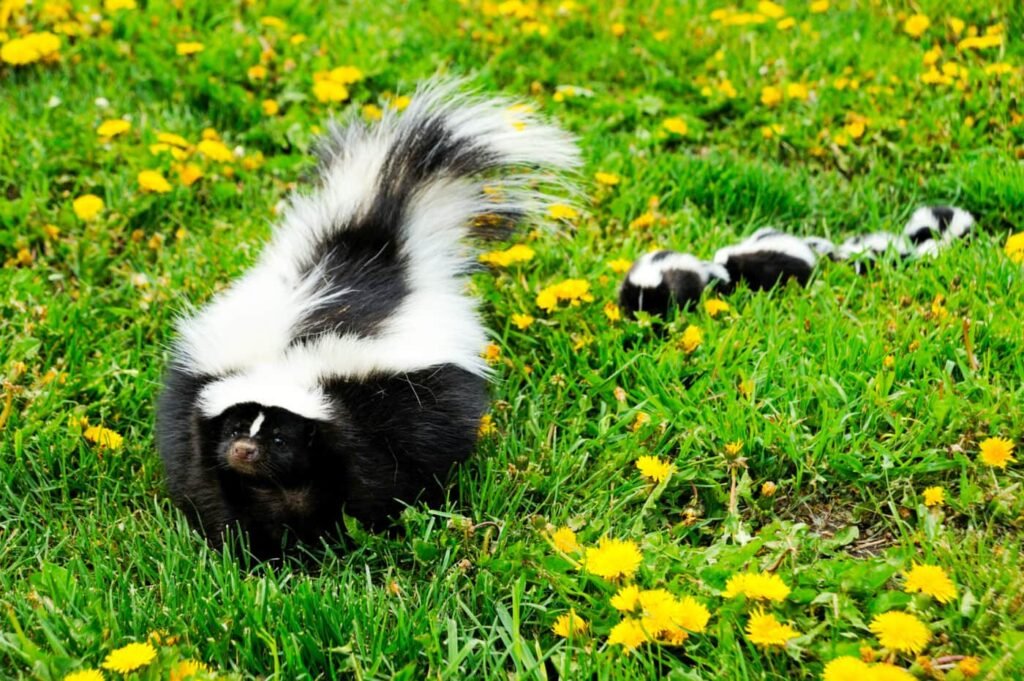
Pingback: The 16 Types Of Animals Like Moles(with Images) - Wildlifeboss.info